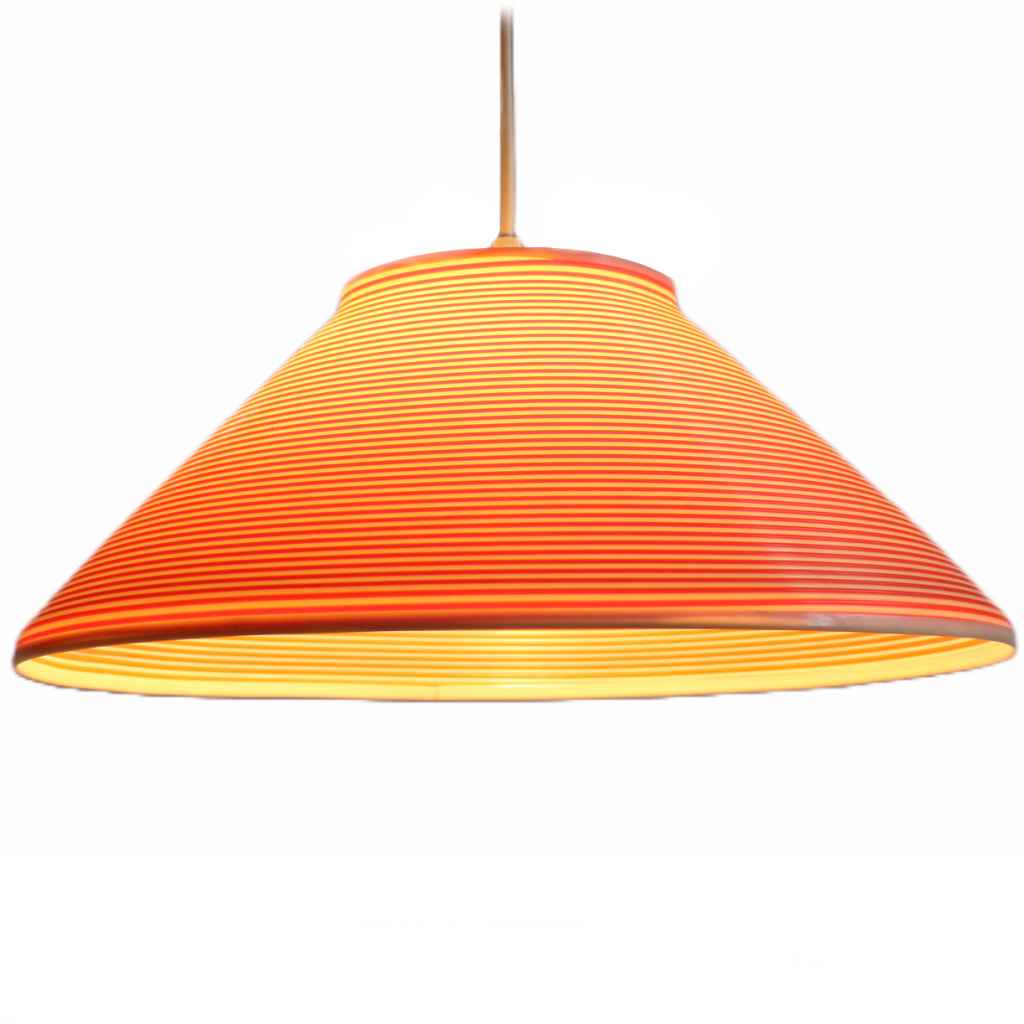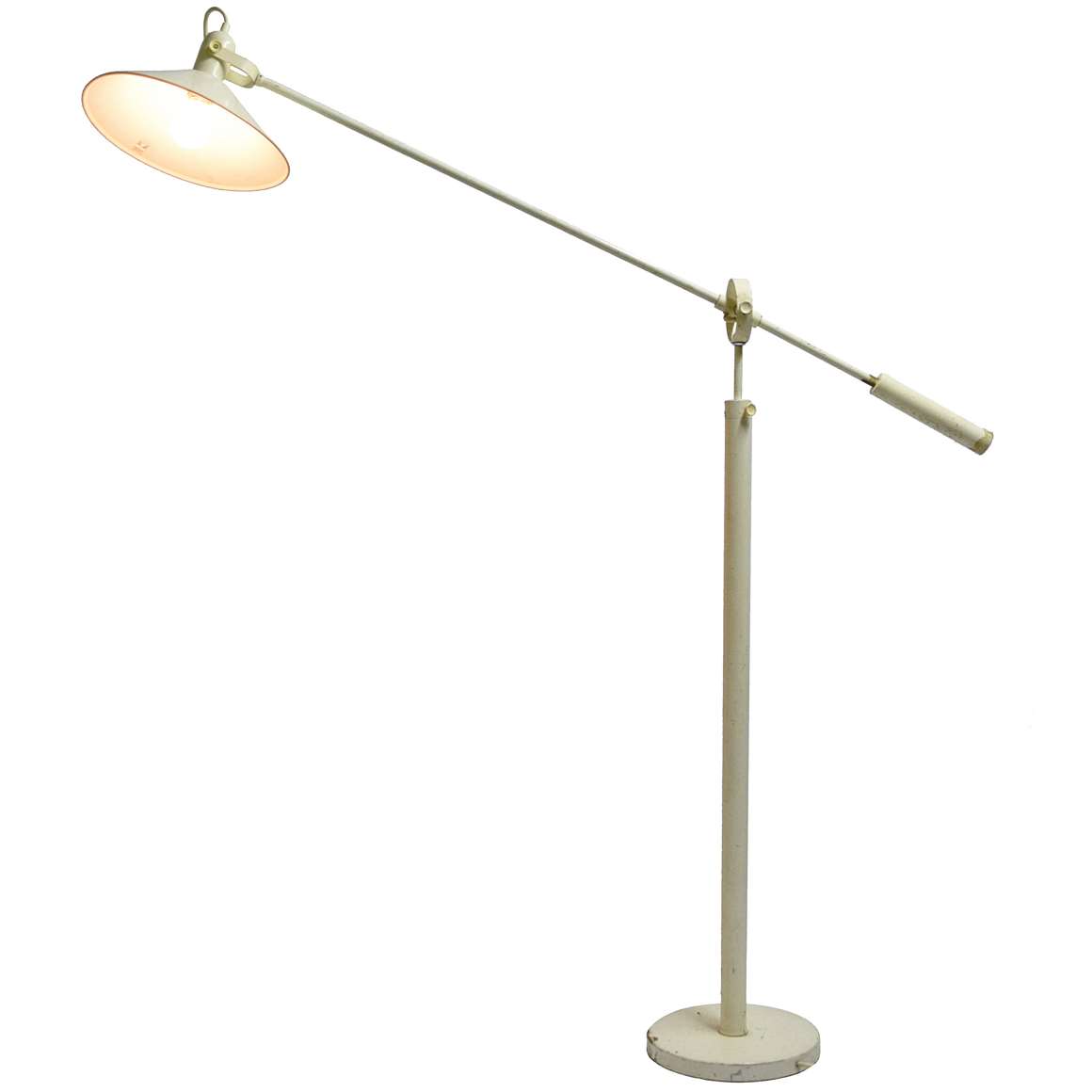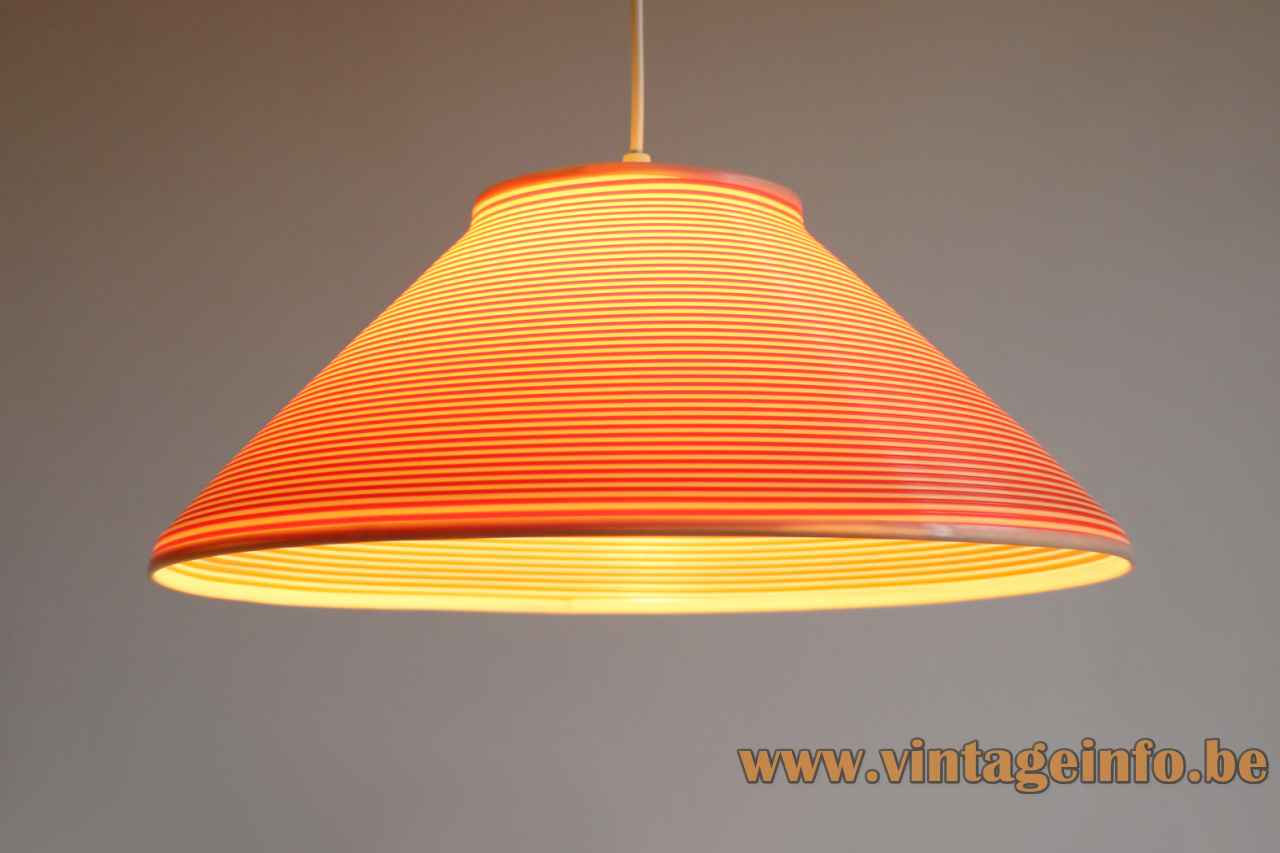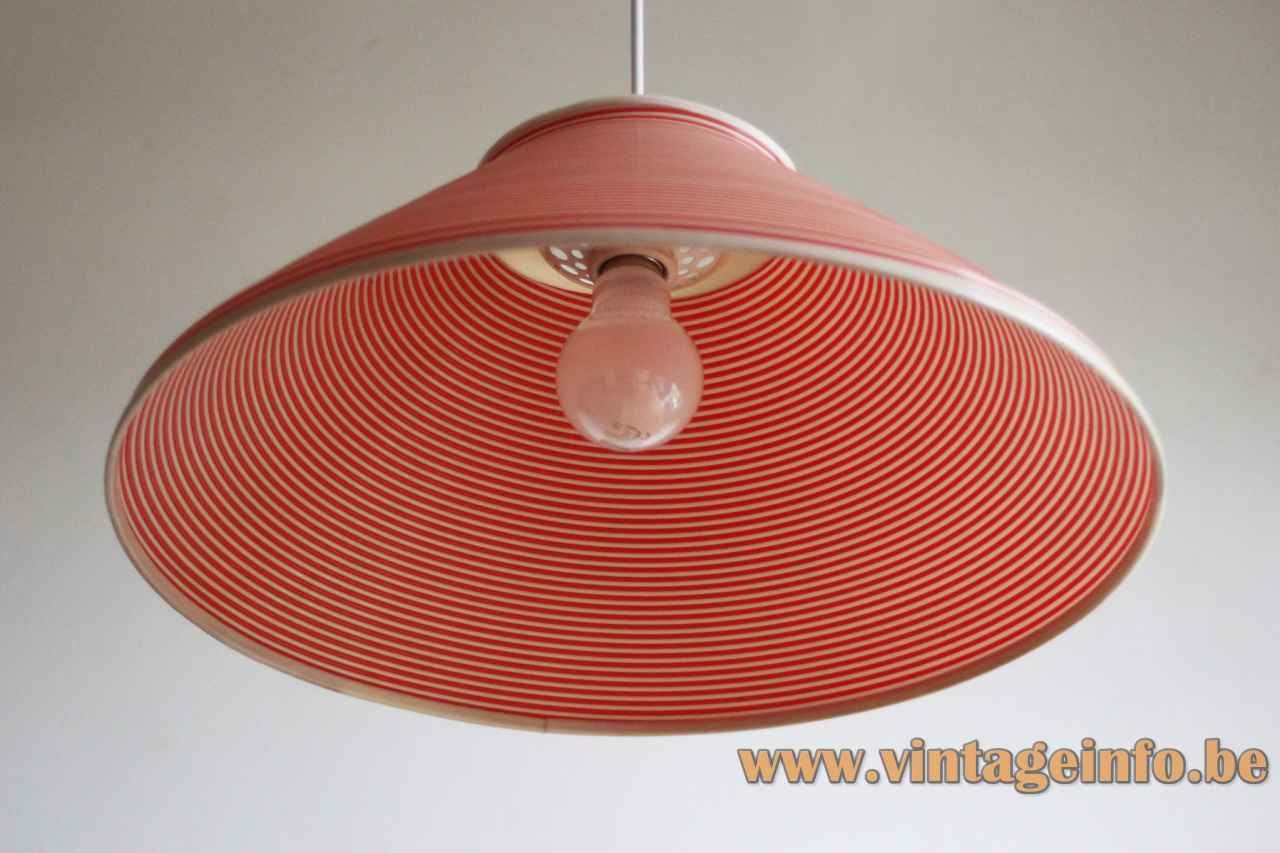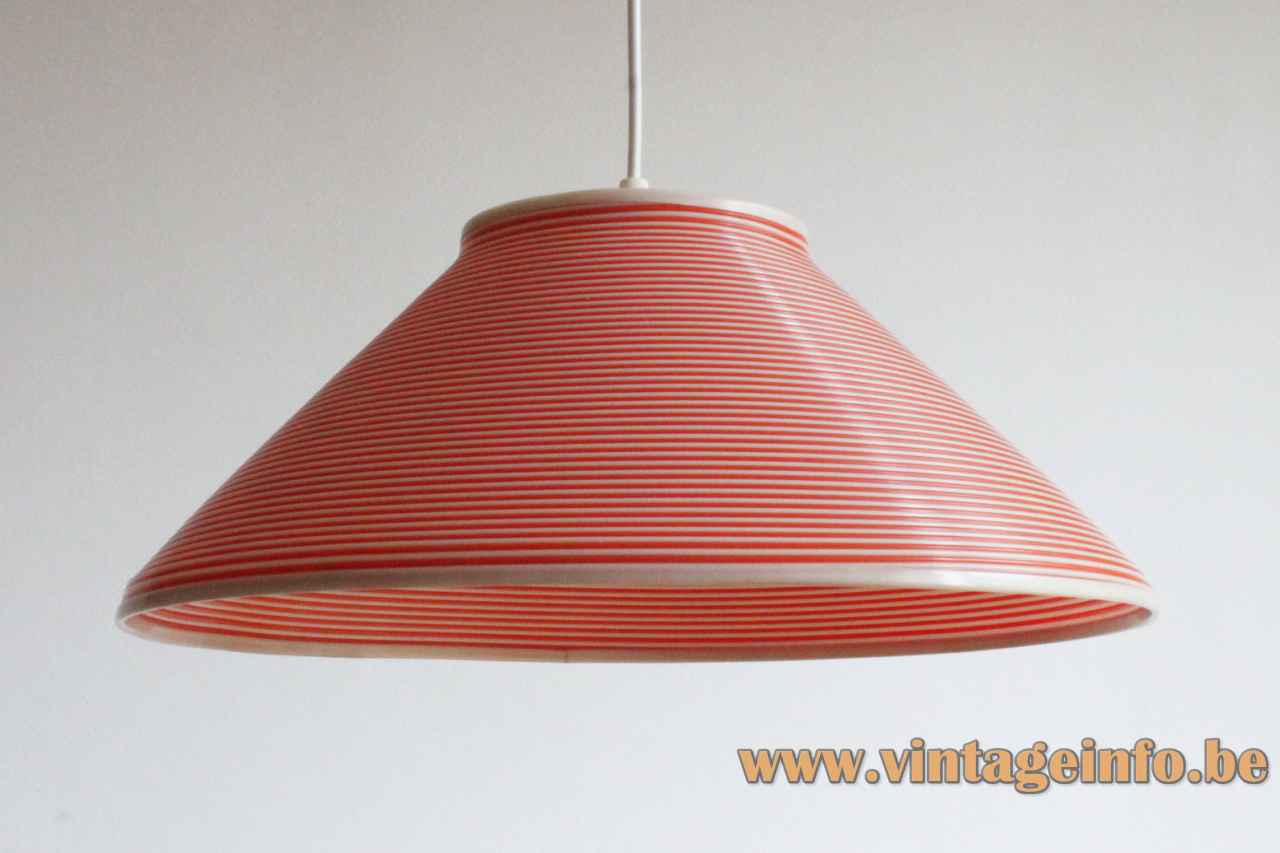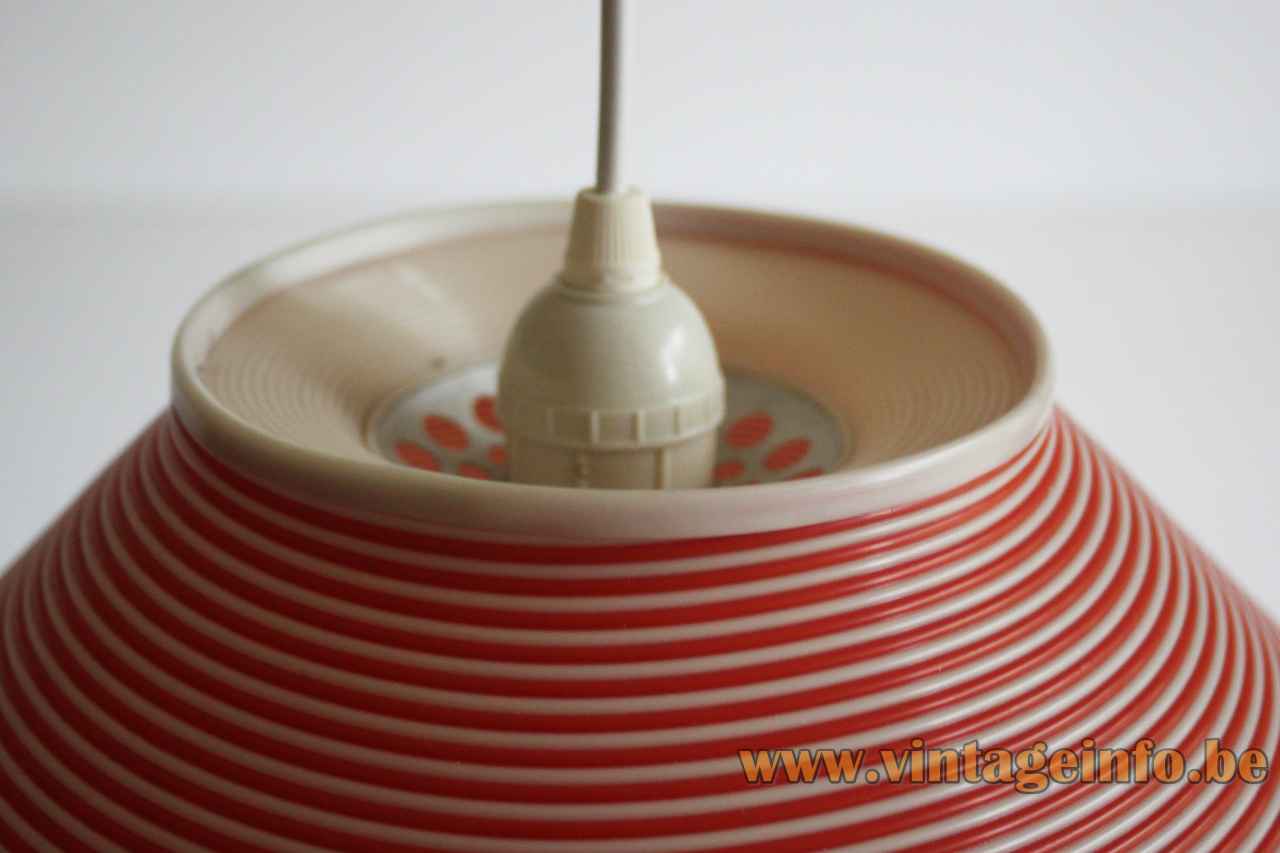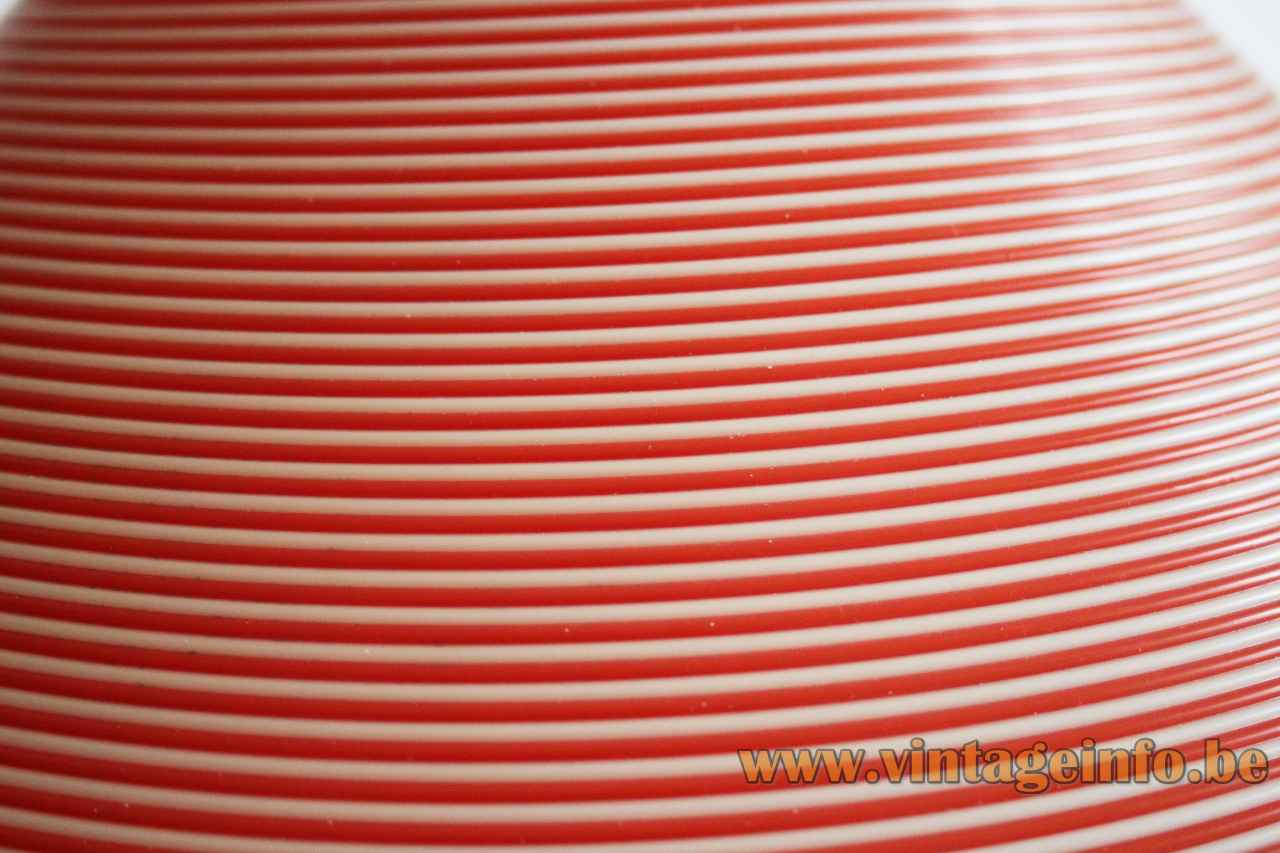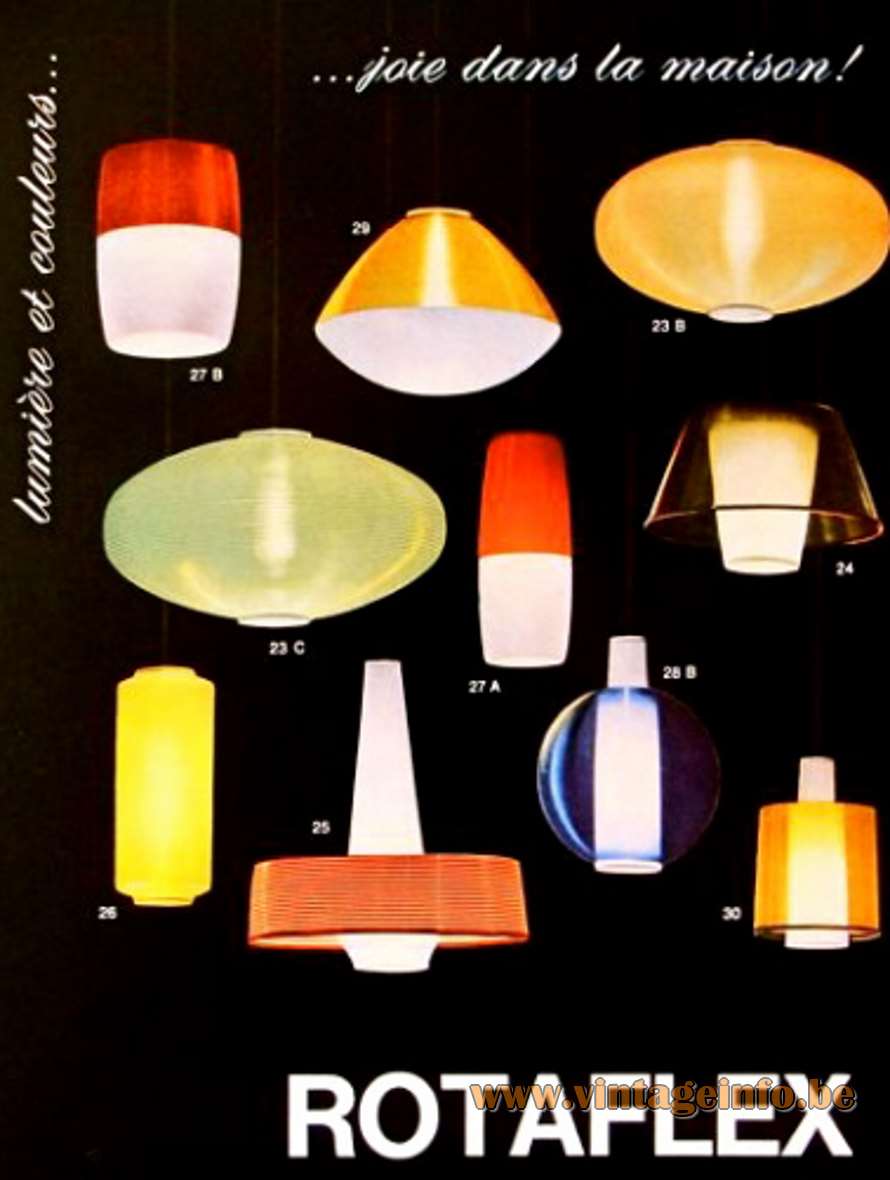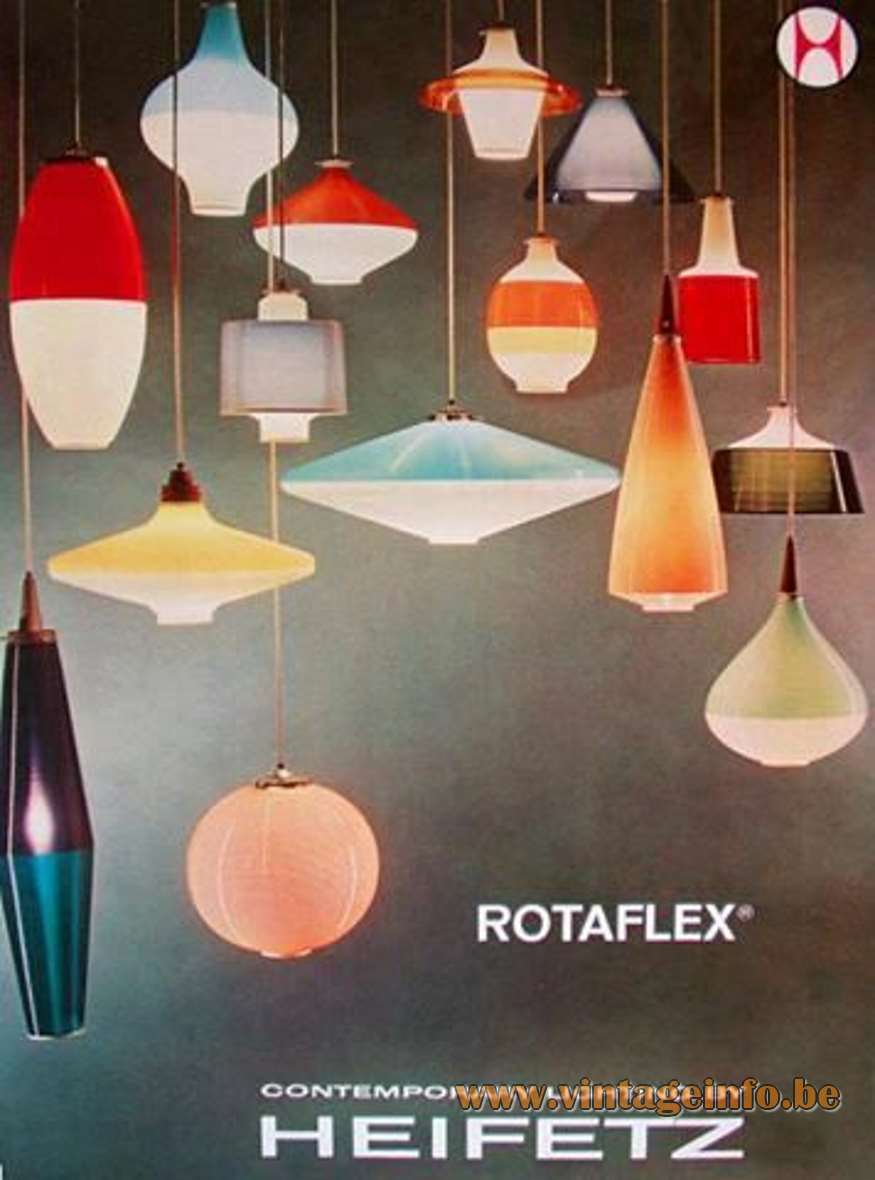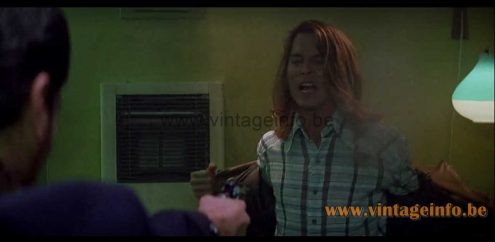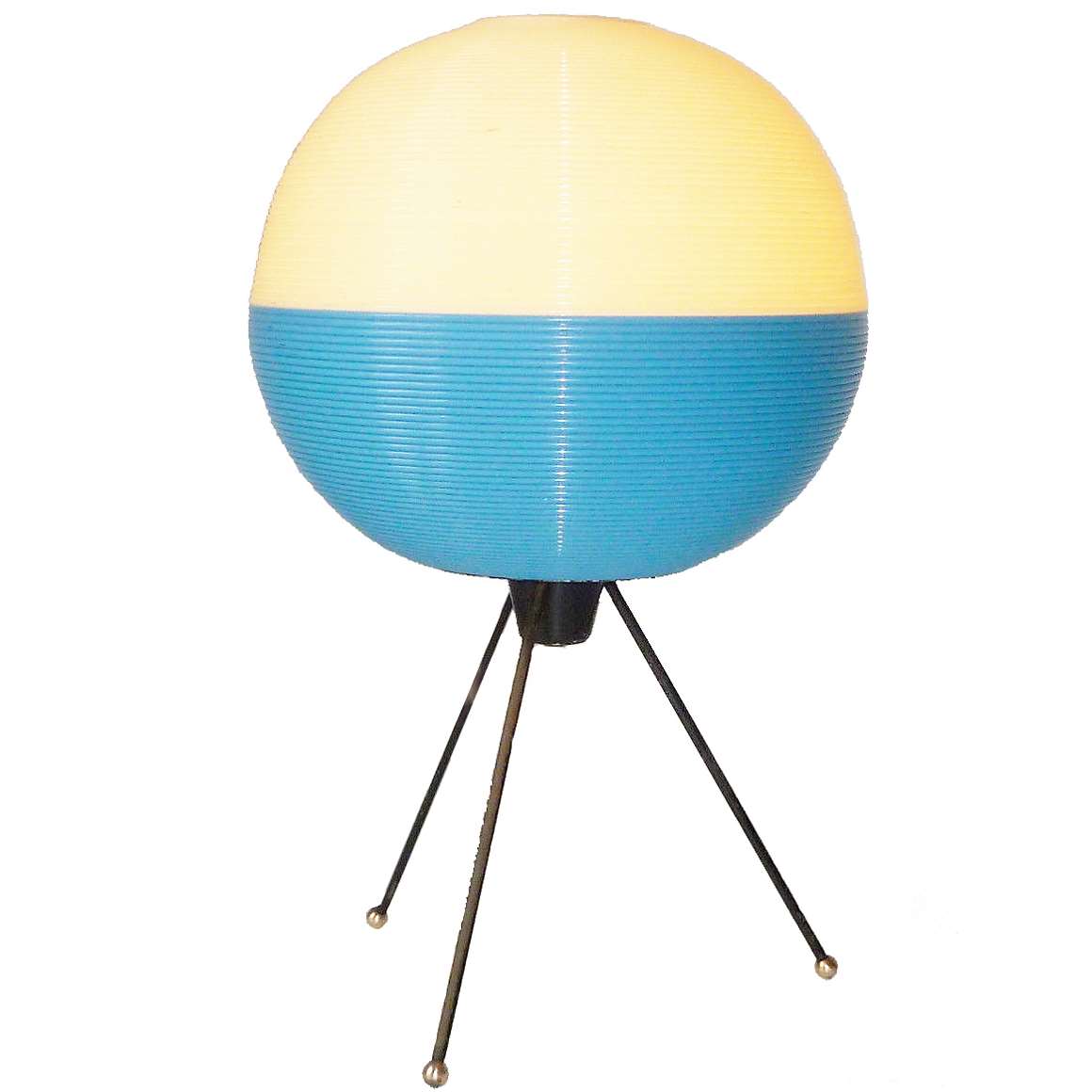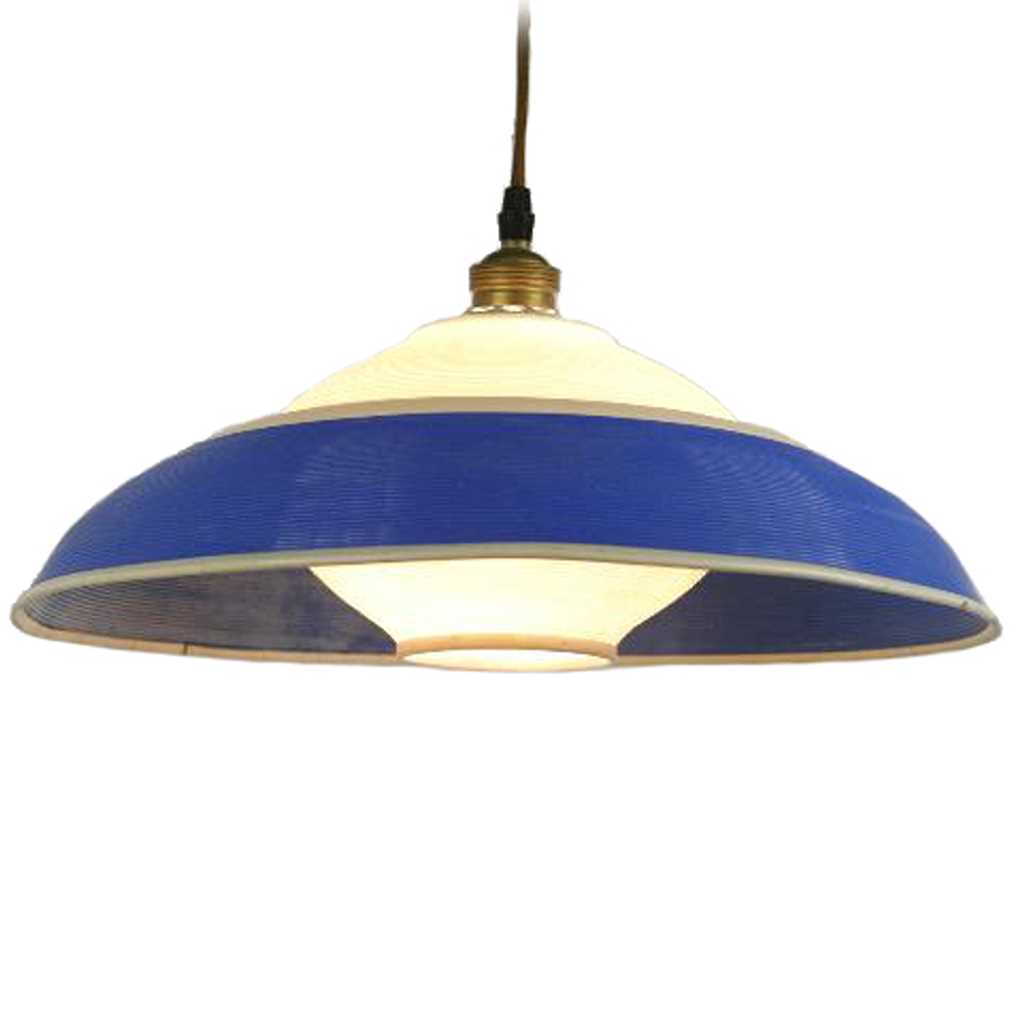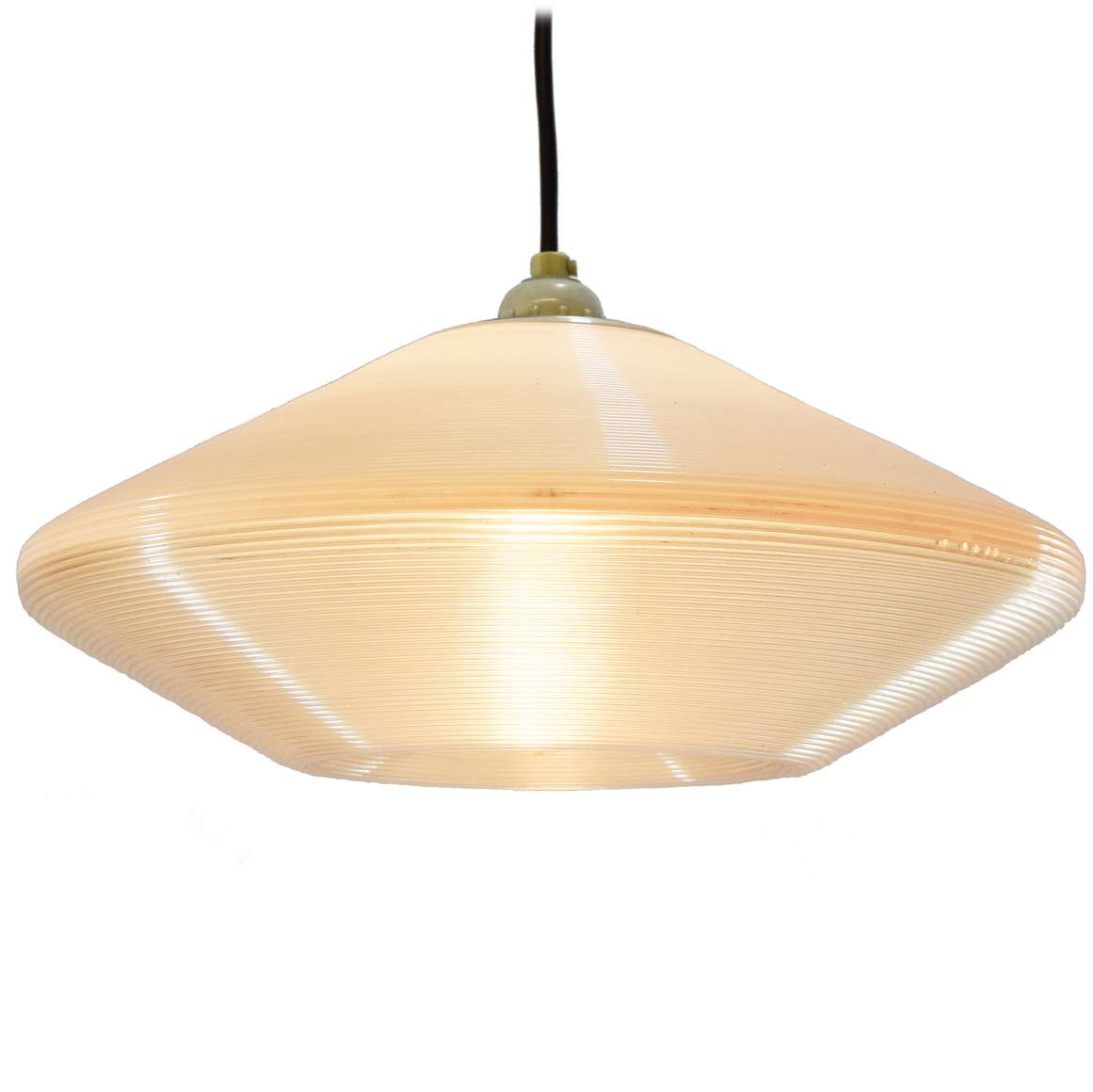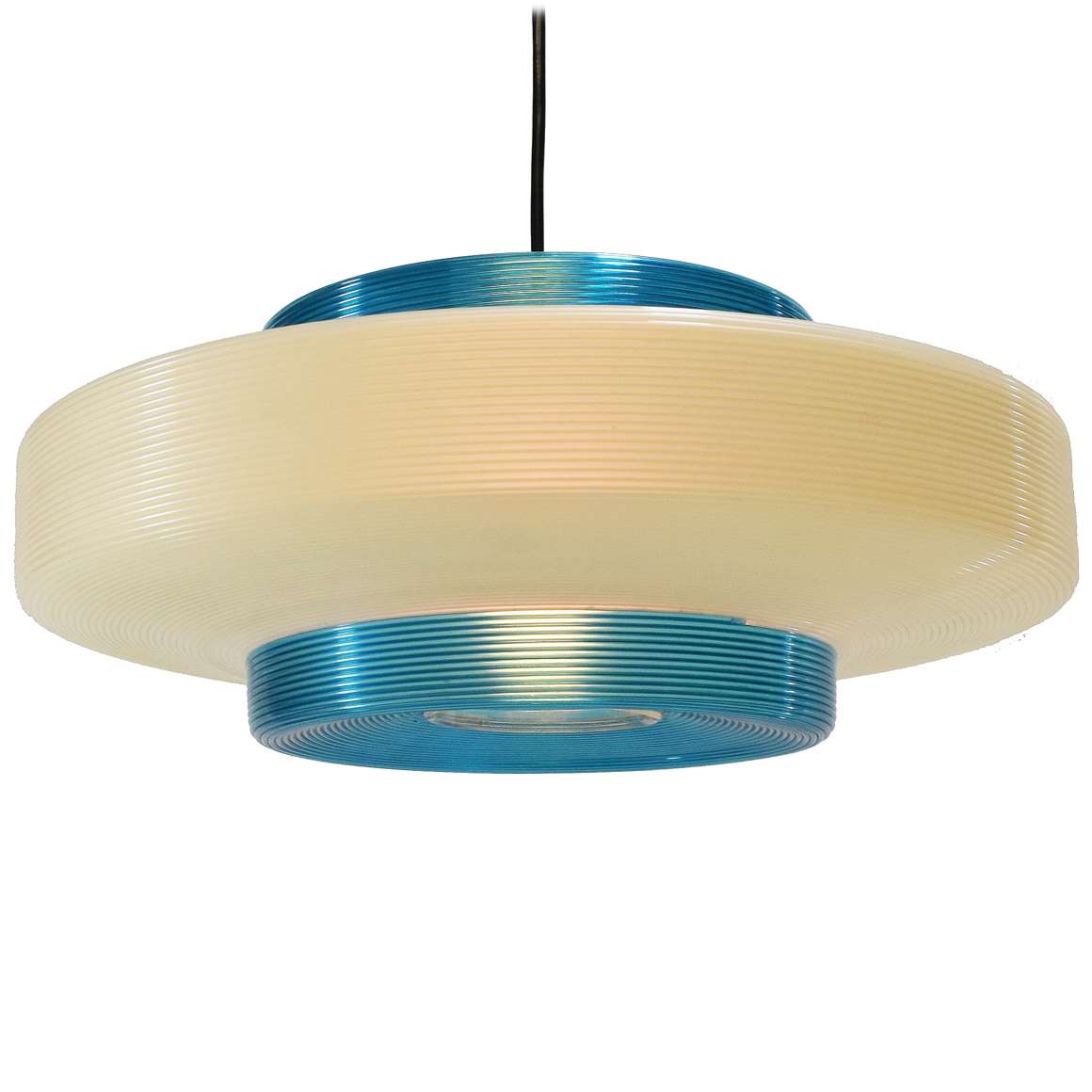Rotaflex publicity from France and the USA.
Lamps In The Movies
A blue & white Rotaflex pendant lamp was used as a set decoration in the 2001 American biographical crime film Blow. Starring Johnny Depp, Penélope Cruz, and Franka Potente.
Many thanks to Joeri from Centurysoup for the beautiful pictures. You can find his website and shop over here.
1960s Conical Rotaflex Pendant Lamp
Materials: Round white & red striped conical lampshade made of cellulose acetate. White plastic canopy. Aluminium socket holder. White Bakelite E27 socket.
Cord: 100 cm / 39.37’’
Height: 18 cm / 7.08”
Width: ∅ 41 cm / 16.14”
Electricity: 1 bulb E27, 1 x 75 wattmaximum, 110/220 volt.
Anytypeof light bulb canbeused, not a specific one preferred.
Period: 1950s, 1960s – Mid-Century Modern.
Designer: John & Sylvia Reid – attributed.
Manufacturer: Rotaflex Ltd, Rotaflex House, 241 City Road and Princess Street, London, United Kingdom.
Other versions: This 1960s conical Rotaflex pendant lamp exists in several colours.
The Rotaflex plastic type was invented by Rotaflex together with the French company A.R.P. – L’ Atelier de Recherche Plastique (Plastic Research Workshop).
Rotaflex
Rotaflex was founded in 1953 and led by Bernard Stern who brought the company in a few years to one of Britain’s leading lighting makers.
John & Sylvia Reid were two of the most well known consultant designers for the lighting manufacturers Rotaflex. They are famous for their Metallux, Interplay, Honeycombs, Fernland Cylinders, Sphere lamp designs and many more. They also designed many of this type of plastic lamps.
John & Sylvia Reid also designed furniture for Stag between 1952 and 1962. Their S-range furniture is back in production, you can find it on their website.
Rotaflex received several design awards, among others, iF Design awards for this type of pendant lamps in 1957. The Rotaflex company no longer exists.
Atelier de Recherche Plastique
The Atelier de Recherche Plastique was founded in 1954 by Pierre Guariche (1926 – 1995), Joseph-André Motte (1925 – 2013) and Michel Mortier (1925 – 2015). The three young designers wanted to shake the codes of classicism by drawing new forms to create more accessible furniture and lights. All three met while working in the agency of designer Marcel Gascoin.
In 1954, they take part in the Salon des Arts Ménagers (Household Arts Fair) and they receive numerous prizes. Their furniture and lamps were produced by companies such as Airborne, Disderot (Atelier Pierre Disderot), Meubles TV, Huchers-Minvielle, Luminalite, Steiner and Rotaflex.
The ARP, Atelier de Recherche Plastique did not last long. 3 years later in 1957, the company will end.
In Germany it was Sompex Licht und Form, Rolf O. Burghard KG Düsseldorf, who produced and sold them. In Belgium and some other countries in Europe they were sold by Massive. Disderot produced and sold them in France. Philips from The Netherlands had some lamps in their collection.
In Sweden these lamps were named Rotoflex and they were produced by Bergboms. Designers: Alf Svensson, Bertil Roos, Sigvard Bernadotte. In Finland they were sold by Oy Plastex AB and Stockman ORNO. You can find several lamps in the catalogue here on Vintageinfo.
In the USA they were produced and sold by Heifetz, Lightolier and Verplex.
Cellulose acetate
Cellulose acetate is an early acrylic, sold under the trade names Rhodoid in France and Great Britain, Tenite in the USA and Cellon in Germany. It was first prepared in 1865. Cellulose acetate is used as a film base in photography, for eyeglasses, cigarette filters and playing cards.
Links (external links open in a new window)
Twitter: Galerie Pascal Cuisinier A.R.P. exposition in Paris, France in 2017
Facebook – John & Sylvia Reid Collection
Galerie Pascal Cuisinier website
Interview from 1966 with Bernard Stern about Rotaflex on the vads-website
Joseph-André Motte – Wikipedia
